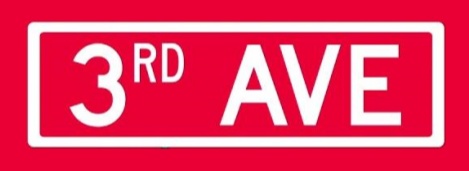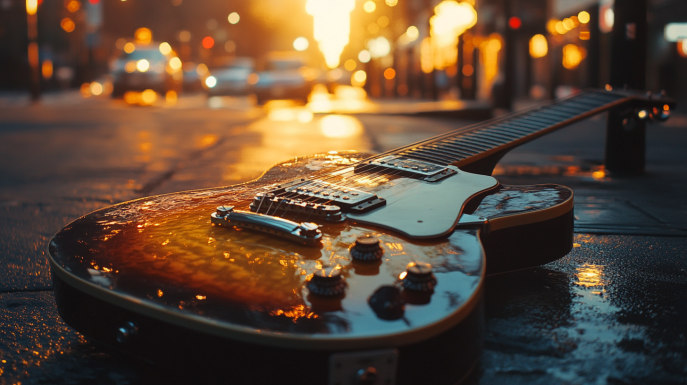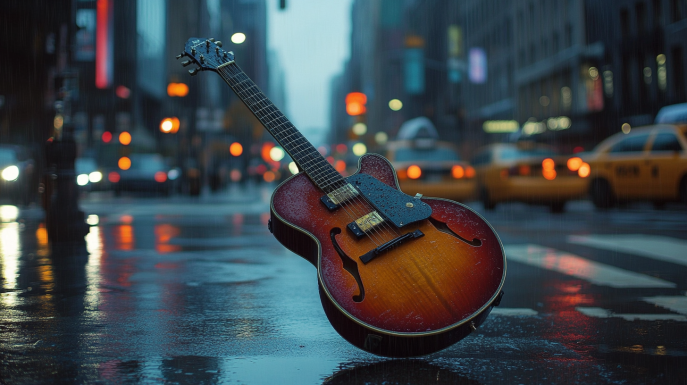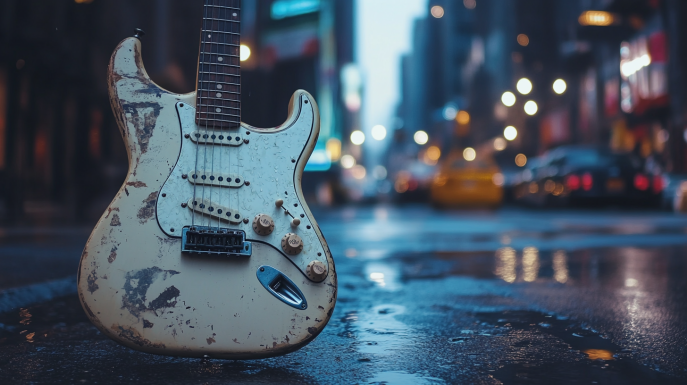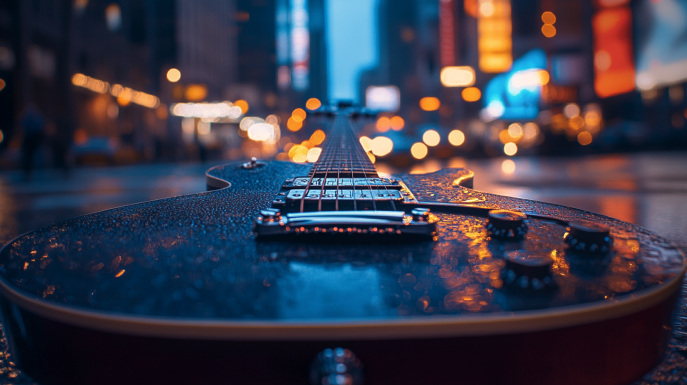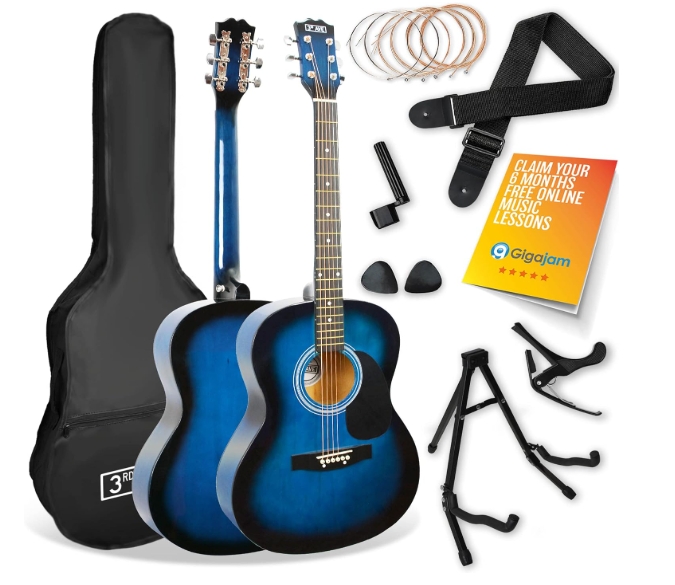
3rd Avenue Full Size 4/4 Acoustic Guitar Pack for Beginners
- full size acoustic guitar premium pack, ideal to start learning guitar
- includes bag, stand, strap, strings, string winder, picks, tuner and capo
Everything You Need to Know Before Getting Your First 3rd Avenue Acoustic Guitar
You’ve decided to learn how to play the acoustic guitar. Now comes the exciting part – choosing your first acoustic guitar!
With so many options out there, it can feel overwhelming trying to find the right beginner acoustic guitar for you. That’s where the 3rd Avenue acoustic guitar comes in. 3rd Avenue acoustic guitars are designed specifically with beginners in mind – they’re affordable, high-quality, and easy to play.
In this comprehensive buying guide, we’ll walk you through everything you need to know about 3rd Avenue acoustic guitars so you can find the perfect fit for you and your budget.
What is the 3rd Avenue Brand?
3rd Avenue is a reputable musical instrument company that provides high-quality, inexpensive instruments and accessories for musicians of all skill levels. They offer acoustic, electric, bass, and classical guitars as well as ukuleles, violin, banjo, and mandolin.
The 3rd Avenue acoustic guitar line is their most popular, catering directly to beginners and intermediate players. Their acoustic guitars feature a full and balanced tone, comfortable feel and playability, and an attractive look – all for budget-friendly prices ranging from $50 to $300.
Many musicians got their start on a 3rd Avenue acoustic guitar, appreciating the quality and reliability of the brand. As you progress in your musical journey, a 3rd Avenue acoustic is one you won’t easily outgrow.
What to Look for in a Good Beginner Acoustic Guitar
When shopping for your first acoustic guitar, there are a few key specifications to look for:
- Body style – The two main body styles are dreadnought and concert. Dreadnought guitars have a wider body, larger soundboard, and deeper tone. Concert guitars are smaller with a bright, focused tone. For beginners, a full-size dreadnought body is recommended for the best volume, projection and rich sound.
- Construction – Plywood guitars are cheaper but may warp and buzz over time. Solid wood top acoustic guitars last longer and have better sound. Laminate back and sides are decent for beginners.
- Neck – Look for guitars with a slim, comfortable neck that’s easy for your hands to grip. Neck width options include 1-11/16″ nut width or 1-3/4″, with most beginners preferring the narrower nut.
- Playability – Make sure the action (string height) isn’t too high, which makes pressing down the strings difficult. Acoustics set up for beginners have a low, comfortable action right out of the box.
- Quality hardware – Tuning pegs, bridge pins and saddle should be sturdy and hold tune. Plastic hardware is low quality – opt for brass, nickel or chrome.
- Price – Beginner acoustic guitars range from $100-$500. Aim for $150-$300 for decent construction without breaking the bank.
Key Features of the 3rd Avenue Acoustic Guitar
Keeping the above criteria in mind, the 3rd Avenue acoustic guitar checks all the boxes for an excellent, affordable beginner instrument. Here are the key features that make the 3rd Avenue acoustic a fantastic starter guitar:
- All-laminate construction – Both the top and back/sides are made from laminated wood. This keeps costs down yet provides good tonal quality.
- Spruce top – A laminated spruce top lends itself nicely to bright, balanced tone and good projection.
- Full-size dreadnought body – The large body equates to impressive volume and sustain. Comfortable for most players.
- Rosewood fingerboard – Smooth and comfortable to press down on. Rosewood is a popular and attractive fingerboard wood.
- 1-3/4″ nut width – Allows comfortable grip and suitable string spread for most beginners.
- Nato neck – Strong, stable neck wood that feels great in the hand.
- 20 frets – Enough range for versatility as a beginning guitarist.
- Chrome tuners – Holds tune reliably. An upgrade from plastic tuners.
- Compensated saddle – Intonates accurately up the neck for good tuning across all frets.
- Light action – Requires less finger pressure, avoiding fatigue for new players.
- Nylon gig bag – Provides protection and portability right out of the box.
The Cost of a 3rd Avenue Acoustic Guitar
3rd Avenue acoustic guitars range from around $100 on the low end up $300 for higher end models. What affects the price? Here are the main factors:
- Brand name – Small brands like 3rd Avenue cost less than big names like Taylor or Martin. But 3rd Avenue is known for quality.
- Wood quality – Solid wood tops command higher prices than laminate tops. Laminate back and sides keep costs down.
- Body and neck materials – Mahogany or maple cost more than economical woods like nato. Rosewood boards cost more than alternative tonewoods.
- Level of ornamentation – Inlays, body and fretboard binding, and gloss finishes add aesthetic value at higher prices.
- Hardware – Open gear tuners, compensated saddles and bone nuts/saddles raise the price over standard parts.
- Electronics – Onboard preamps and pickup systems allow plugging in, and cost extra.
- Location of manufacture – Handcrafted in America costs more than mass-produced imports. 3rd Avenue imports keep costs down.
For a beginner, a budget of $150 to $200 lands a quality 3rd Avenue acoustic with decent sound, playability and durability. Moving up in price, $250 to $300 buys a noticeable bump in wood grades, aesthetics and electronics.
Is the 3rd Avenue Acoustic Good for Beginners?
The 3rd Avenue acoustic guitar excels as a beginner instrument for several reasons:
- Easy playability – Low action and slim neck profile make learning chords and fretting notes simple right off the bat.
- Good sound – Provides volume, resonance and balanced tone for sounding like a “real” acoustic guitar.
- Quality materials – Laminate wood construction prevents cracking and warping. Chrome hardware avoids detuning issues.
- Ideal size – The full dreadnought body fits most beginners comfortably with room to grow.
- Lightweight – Weighing under 5 pounds makes holding and practicing easy for long periods.
- Affordable price – Costing just over $100, it’s an instrument you won’t be afraid to bang up as a novice.
- Positive reputation – High user ratings back up the quality and value provided.
The 3rd Avenue acoustic allows newbies to focus on proper technique rather than fighting a poor setup. As skills progress, it will continue sounding great for years of playing.
Where to Buy a 3rd Avenue Acoustic Guitar
Searching for your first acoustic guitar? Here are the top places to buy a 3rd Avenue acoustic:
- Online retailers – Sweetwater, Musician’s Friend, and Guitar Center all carry the 3rd Avenue line at competitive prices with fast shipping.
- Amazon – Huge selection of 3rd Avenue models priced low with user reviews. Watch for variations in product descriptions.
- eBay – Gently used 3rd Avenue acoustics can be scored here for deep discounts if you don’t mind some wear and tear.
- Local music stores – Check independent shops for available inventory you can try out in person before buying.
- 3rd Avenue Guitar website – Purchase directly from the manufacturer to cut out the middleman costs.
- Craigslist – If willing to buy used from individuals, great deals can be found from former beginners upgrading their gear.
Wherever you purchase, be sure to compare prices across multiple sellers. With 3rd Avenue being a lesser known brand, pricing may vary widely for the exact same model. Shopping around can save you a chunk of change on your first acoustic guitar.
Key Features and Models of 3rd Avenue Guitars
3rd Avenue offers a range of beginner to intermediate acoustics with different features at various price points. Here is an overview of the main models and their characteristics:
3rd Avenue Legacy Series
- Timber Acoustic ($100) – All laminate construction with spruce top. Rosewood fretboard and bridge.
- Folk Acoustic ($120) – Spruce laminate top with nato back, sides and neck. 20 frets.
- Concert Acoustic ($150) – Smaller concert body shape. Spruce top with mahogany back and sides.
- Acacia Acoustic ($180) – Layered acacia back and sides. Two-way truss rod for added neck stability.
3rd Avenue Standard Series
- Reef Acoustic ($200) – Fishman Ion-T preamp system. Dual action truss rod. Rosewood fretboard.
- Biscayne Acoustic ($220) – Cutaway body for upper fret access. Onboard EQ controls. Gloss finish.
- Woodbox Acoustic ($250) – Solid spruce top. Mahogany neck with dual action truss rod. Rosewood bridge and fretboard.
- Palisade Acoustic ($300) – Solid cedar top. Maple binding. Abalone rosette inlay. die-cast chrome tuners.
The Legacy series provides affordable, quality sound at entry level price points. The Standard series adds solid wood components, electronics and ornate aesthetics for intermediate players.
Acoustic Guitar Accessories to Consider
Outfitting your new 3rd Avenue acoustic with some useful accessories will make playing easier, more fun and help protect your investment:
- Extra strings – Acoustic strings wear out and break. Having spares on hand prevents unwanted downtime.
- Picks – Try out different pick sizes, shapes and thicknesses to determine your preference. Lots of variety comes in multi-packs.
- Guitar strap – Makes standing up with your guitar comfortable and secure. Expandable neoprene straps provide cushioned support.
- Capo – This clamp-on device shortens all strings at once allowing you to play in different keys and vocally. A must-have accessory.
- Electronic tuner – Tune your strings faster and more accurately than with a tuning fork or pitch pipe. Clip-on chromatic tuners work great.
- Humidifier – Inserting a humidifier inside the body prevents the wood from drying out and cracking in drier climates.
- Guitar case – For travel and safe storage, swap out the included gig bag for a hardshell acoustic guitar case with plush lining.
While not completely necessary, these handy accessories will make your practice sessions easier and enhance your playing experience.
How to Tune Up Your 3rd Avenue Acoustic
Tuning your 3rd Avenue acoustic correctly maintains proper intonation so chords ring out with resonance and notes fret true up the neck. Here is a simple process for tuning up your new guitar:
- Using a chromatic tuner, tune your lowest string first – the thick E string to E pitch.
- Next tune the A string by matching it to the E string at the 5th fret. The 5th fret of the low E should sound the same as the open A string.
- Tune the D string similarly, matching its pitch to the 5th fret of the A string.
- Continue tuning each string by matching pitch to the 5th fret note of the string prior. The exceptions are the G string tuned to the 4th fret of the D string, and the B string tuned to the 4th fret of the G string.
- Do final fine tuning using the tuner to bring each string to exact pitch. The display will indicate sharp or flat.
- Check tuning up the neck by playing the 5th and 12th frets to confirm each string intonates correctly. Make minor tuner adjustments as needed.
- Stretch and retune strings after initial tuning for greater tuning stability. Over time strings hold tune better.
Take your time tuning slowly and accurately. Using technology like a clip-on tuner removes the guesswork so you can have complete confidence in your tuning.
Acoustic Guitar Sizes Explained
Acoustic guitars come in a variety of sizes to accommodate players of different ages, body types and playing styles. Understanding the terminology is helpful when choosing the right acoustic guitar size:
- Full size – Also called dreadnought or jumbo. With its large rounded body and 14-fret neck, this is the most common acoustic guitar size for adults. Provides deep, booming bass and loud projection suited for rhythm playing. The 3rd Avenue Legacy and Standard series are full size acoustics.
- Parlor – The smallest mainstream size with a narrow 12-fret neck joining the body at the 12th fret. Balanced tone favorable for intricate fingerpicking. Good for travel and smaller players due to compact feel.
- Concert and auditorium – Medium-sized with a rounded shoulder shape. Shorter scale than a dreadnought. Excellent mid-range focused tone for soloing. More balanced and articulate than a full size. The 3rd Avenue Concert Acoustic model is in this category.
- Grand auditorium – Slightly larger than a Concert with more bass response. Provides a versatile balance of volume, playability and tonal clarity.
- Grand concert – Another medium size with a tighter waist than a dreadnought. Combines big guitar projection with a comfortable feel.
For most adult beginners, a full-size dreadnought body like the 3rd Avenue Legacy and Standard Series provides the traditional look, roomy fretting hand space, strongest projection and full low-end that says “acoustic guitar”.
Variations Among 3rd Avenue Guitars
While the 3rd Avenue acoustics all share the same quality standards and value reputation, they differ across various models in these aspects:
- Body shapes and sizes – Choose from 3rd Avenue’s full dreadnought size, their smaller concert size, or cutaway models for easier high fret access.
- Wood types – Back and side woods range from nato to mahogany to maple depending on the model. Solid or laminated wood tops.
- Fretboard woods – Most models feature smooth rosewood while others may have laurel or maple fretboards.
- Finish options – Gloss, satin and transparent stains give distinctive looks. Plus some models have binding for ornamental styling.
- Preamp / pickup systems – Only some 3rd Avenue models include electronics which let you plug into an amplifier at gigs.
- Appointments – Higher end models have more decorative extras like abalone inlays, maple body purfling and stamped rosettes.
- Hardware – Open gear tuners, compensated saddles and graphite nuts and saddles strengthen the build quality over standard hardware.
With this degree of variety, you’re sure to find a great match for your playing needs and personal style within the 3rd Avenue acoustic guitar lineup.
Are 3rd Avenue Guitars Durable for New Players?
With proper care and maintenance, a 3rd Avenue acoustic guitar will provide many years of playability even for newbie players who are harder on their instruments. Here are the durability factors that make them suitable for beginners:
- All-laminate wood construction – The layered wood tops and backs resist cracking and warping from changes in temperature and humidity. Laminate stands up well to bumps and drops too.
- Painted or stained finishes – Compared to delicate gloss finishes, 3rd Avenue’s polyurethane finishes better hide superficial scratches and dings.
- Reinforced necks – Dual action truss rods allow adjusting relief to compensate for string tension and prevent neck bowing.
- Quality hardware – Die-cast chrome tuners stay in tune longer. Compensated saddles improve intonation accuracy.
- Plastic binding – Unlike wood binding, the plastic binding used on some models won’t crack when inadvertently banged against objects.
- Nato and mahogany woods – These tonewoods are inherently dense and rugged. They withstand heavy strumming and survive small impacts.
While new guitarists should still treat their instrument with care, the durability designed into 3rd Avenue acoustics will instill confidence and allow focusing on learning, not worrying about damage.
Are 3rd Avenue Guitars Good for Performances?
For budding musicians who eventually want to advance to playing live shows, a 3rd Avenue acoustic guitar makes a very capable stage instrument. Here’s why you can confidently perform with a 3rd Avenue:
- Volume and projection – With their full dreadnought body shape, 3rd Avenue acoustics are loud enough to be heard alongside vocals and other band instruments in a live mix.
- Balanced tone – Quality laminate woods and spruce tops provide a clear, even tone across bass, mids and treble that stands out in a crowd.
- Playability – Low action and slim necks set up fast, fluid playing critical for live performance without flubs.
- Stage-worthy looks – From gloss finishes to binding to MOP inlays, 3rd Avenue acoustics have attractive aesthetics worthy of the spotlight.
- Available electronics – Onboard preamps let you plug into the PA system so your acoustic sustains against drums and amps. Feedback-fighting notch filters keep howling at bay.
- Gig bag included – Padded gig bags safely transport 3rd Avenue guitars to venues without worrying about damage en route.
For coffee shop open mic nights or bigger ticket club shows, a 3rd Avenue acoustic guitar provides the quality sound, playability and reliability to fulfill audience expectations and pump up your confidence on stage.
What Do Users Say in 3rd Avenue Acoustic Guitar Reviews?
3rd Avenue acoustics are well-reviewed by actual users – critical feedback for any prospective buyers. Here are the most common positives mentioned:
- Great value – Users describe them as “amazing quality” and “sound like a million bucks” considering their super cheap price points.
- Ideal for beginners – A common sentiment is they make learning guitar “fun and easy” thanks to great playability right out of the box.
- Impressive volume – Multiple reviews praise the “booming sound” that projects well even when unplugged. Makes practice satisfying.
- Appealing looks – From the wood grain patterns to the glossy finishes, users find their 3rd Avenue visually striking and “prettier than expected”.
- Good intonation – Thanks to compensated saddles, accurate tuning extends up the fretboard enabling beginners to “actually sound good” as they learn.
The main complaints focused on minor finish flaws expected at lower price points along with a few reports of high actions needing adjustment. But overwhelmingly, buyer reviews applaud 3rd Avenue acoustics as amazing starter guitars.
Cleaning and Maintenance Tips for 3rd Avenue Guitars
Caring for your 3rd Avenue acoustic guitar will keep it performing its best season after season. Here are some tips for proper cleaning and regular maintenance:
- Wipe down the body, neck and fretboard with a dry soft cotton cloth after each use to remove oils, grime and dust buildup.
- Every few string changes, clean the fretboard using fretboard cleaner or mild soap and water, then recondition with fretboard oil.
- Use a humidifier inside the guitar body and a hygrometer to monitor the 45-55% ideal humidity range.
- Apply lemon oil or fretboard conditioner to the rosewood fingerboard every 1-2 months to prevent drying and cracking.
- Polish gloss finished models every 3 months with a non-abrasive guitar polish to restore shine and prevent grime accumulation.
- Check and adjust the neck relief and string action yearly to compensate for string tension and climate changes.
- Replace strings regularly, wipe down after playing, and store in cases to prevent corrosion that can pit the frets.
- Use a guitar strap and stand to avoid damage from leaning guitars against stands, walls or furniture.
With proper care and maintenance, a 3rd Avenue acoustic will age gracefully and deliver decades of playing enjoyment.
Are 3rd Avenue Guitars Offered for Left-Handed Players?
Unfortunately for southpaws, 3rd Avenue does not currently offer left-handed acoustic guitar models. But lefties need not fret! Here are some workarounds:
- Play right-handed – Like many legendary guitarists, you can learn to play a righty model strung for a right-handed player.
- Re-string right-handed – Strung backwards, a righty 3rd Avenue model works for lefties, just with string order reversed.
- Flip over – Flip a right-handed 3rd Avenue acoustic over to play left-handed style, though controls will be upside down.
- Wider nut – Filing the nut wider on a righty model accommodates rearward string spacing that lefties need.
- Adjust bridge – The bridge can be shifted slightly to realign the intonation for proper left-handed tuning.
- Buy used – Check sites like Reverb and eBay regularly for good deals on used lefty acoustic guitars including the 3rd Avenue brand. Availability will be random.
While right-handed is standard, with a few tweaks almost any guitar can be converted for comfy lefty playing. Don’t let handedness stop you from reaping the benefits of the 3rd Avenue acoustic line.
Wood Types Used on 3rd Avenue Guitars
3rd Avenue constructs their acoustic guitar tops, backs, sides and necks from various wood types that impact the instrument’s sound, looks and price. Common woods found on 3rd Avenues include:
- Spruce – The preferred material for acoustic tops, spruce has bright, airy tones with great projection. It is used on most 3rd Avenue models either solid or laminated.
- Mahogany – Prized for necks and sides, mahogany has a dense, resonant character adding depth and low-mid focus to the tone.
- Nato – Similar to mahogany, affordable nato wood provides comparable tone while keeping costs down on 3rd Avenue’s budget models.
- Maple – Hard maple produces great volume, punch and sustain. It is often used for guitar necks and fretboards.
- Rosewood – The most common fretboard material, rosewood has an appealing look and smooth feel. It contributes warmer tones.
- Laurel – This affordable alternative to rosewood offers tighter lows and crisp highs from the fretboard.
The well-selected combination of tonewoods gives 3rd Avenue acoustics an excellent balanced sound and professional quality appearance.
How Do 3rd Avenue Guitars Compare Sound-Wise?
In terms of tonal quality, 3rd Avenue acoustics compare quite favorably against other major acoustic guitar brands – especially considering their bargain-level pricing. Here’s how they stack up:
- Volume – Just as loud and resonant as comparably-sized models from Fender, Yamaha and Takamine. The all-laminate construction doesn’t hinder projection.
- Bass response – Full dreadnought body produces robust low-end comparable to pricier Martin, Taylor and Guild acoustics.
- Sustain and resonance – The resonant woods used create lively tone with sustain that competes well with models from Breedlove, Seagull and Blueridge.
- Tonal balance – Spruce tops and compensated saddles allow clear, balanced tone across bass and treble registers – on par with Alvarez, Ibanez and Ovation acoustics.
- Tuning stability – Quality hardware including sealed tuners enables staying in tune as reliably as models from Washburn, Epiphone and Takamine.
While they can’t replicate the tone of $1000+ models, 3rd Avenue acoustics easily hold their own for sound against the big brands – and at a fraction of the cost.
What’s in the 3rd Avenue Beginner’s Kit?
3rd Avenue makes getting started on acoustic guitar convenient and affordable with their value-packed beginner’s kit bundle. At around $150, here’s what’s included:
- Full size acoustic guitar – Choose from their popular Legacy series models like the Folk acoustic or Timber acoustic.
- Extra strings – Having backup strings is essential, so a spare 3-pack is thrown in.
- Guitar picks – Sample different pick shapes and gauges with a variety of included picks.
- Tuner – Tune your guitar quickly and accurately with the handy clip-on chromatic tuner.
- Gig bag – Protect your new guitar with a padded nylon gig bag for safe transport.
- Strap – The adjustable fabric strap makes standing with your guitar comfortable.
- Instructional DVD – A DVD teaches beginner basics like holding, tuning, fretting and strumming your new guitar.
- Plectrum – Also called a guitar pick, this triangular piece of plastic, wood or stone is vital for strumming.
The 3rd Avenue Beginner’s Kit takes the guesswork out of getting started and sets you up with everything needed at a bargain price.
Where Are 3rd Avenue Guitars Manufactured?
3rd Avenue does not own their own manufacturing facilities. Rather, their guitars – including all their acoustic models – are produced in factories located in Asia. This arrangement enables providing quality instruments at very affordable pricing.
Specifically, most 3rd Avenue acoustic guitars originate from factories in China and Indonesia where skilled luthiers produce high volumes of instruments. The guitars are constructed using trusted methods perfected for consistency.
After manufacture, all 3rd Avenue guitars undergo rigorous inspection both at the factory and again upon arrival in the United States. This attention to quality control is how they guarantee beginner-friendly playability right out of the box.
While made abroad, the same level of sound, construction and value is packaged into every 3rd Avenue acoustic guitar as competitors costing much, much more. So you can be confident choosing a 3rd Avenue, wherever it may have been built.
Conclusion – Get Started with a Quality 3rd Avenue Acoustic
Hopefully this detailed buying guide gives you all the info needed to decide if the 3rd Avenue acoustic is the right choice for starting your guitar journey. By design, their affordable yet well-made acoustics make learning fun and inspiring right from the initial chord strums.
Whichever 3rd Avenue model you select, proper care and maintenance will keep it sounding its best for many years of play. And as you progress in your musicianship, a trusty 3rd Avenue acoustic guitar will provide warm, balanced tone worthy of any stage.
The bottom line – you can’t go wrong with a 3rd Avenue acoustic! Their quality materials, easy playability and gorgeous tones will have you looking and sounding like a seasoned guitarist in no time. So go ahead, grab your 3rd Avenue acoustic and start strumming today!
